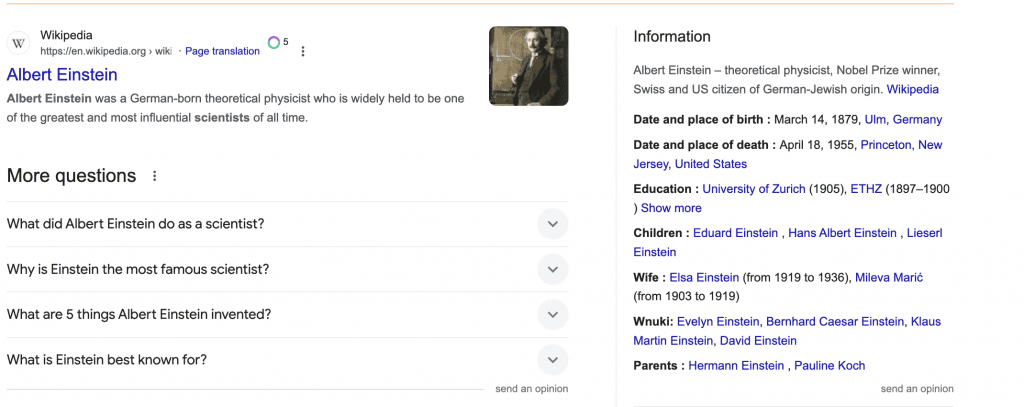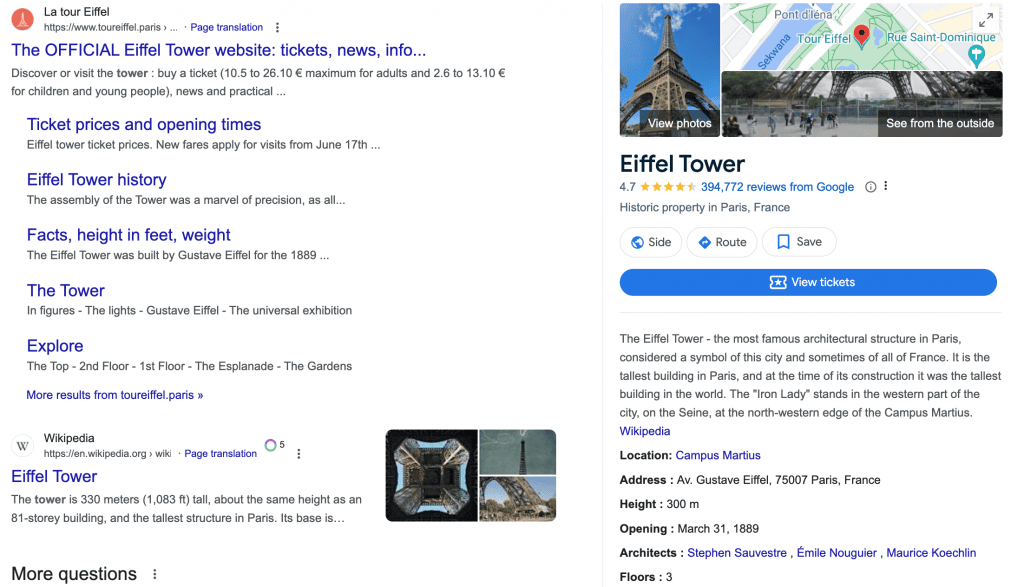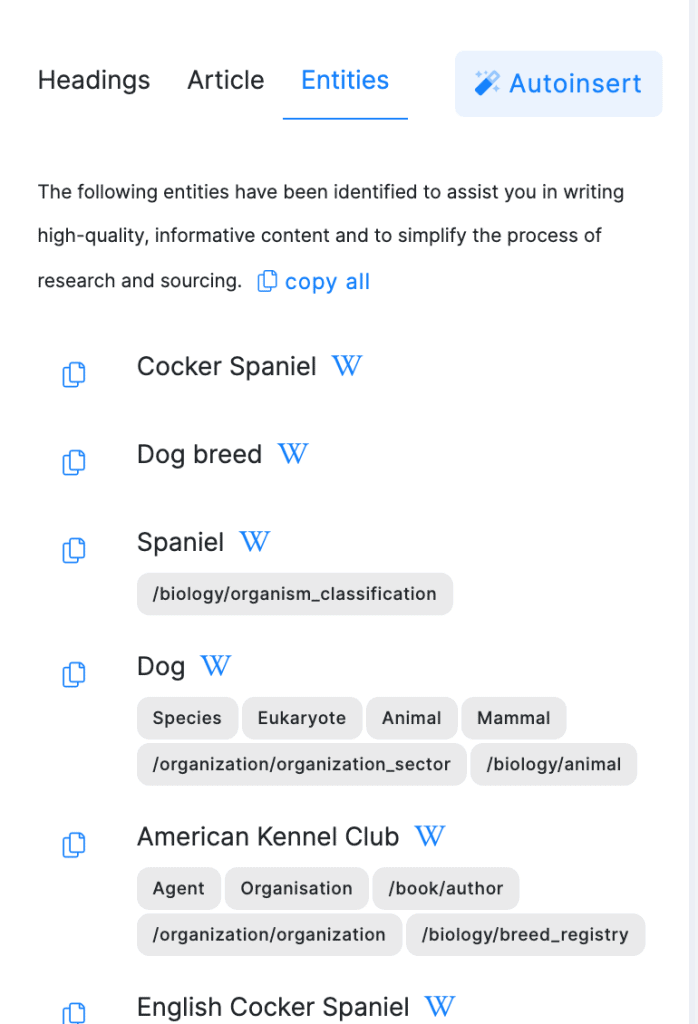HOW TO USE “ENTITIES” FOR BETTER PAGE VISIBILITY.
In today’s article we will introduce you to the concept of “Entities” in the context of SEO. It’s a term that is gaining more and more importance in the world of search engine optimization. You’ll learn what Entities are, how they work, and their importance to your SEO strategy.
Introduction to the concept of Entities.
The origins of Internet search.
In its early days, search engines such as Google relied mainly on simple algorithms that indexed websites based on keywords. At the time, SEO practices focused on keyword density and link networking to increase the position of pages in search results. However, there was a lack of advanced understanding of context and content semantics.
Over time, newer concepts and technologies have emerged to improve SEO and make it easier for users to find information. One such concept is Entities, or semantic entities, which are playing an increasingly important role in search engine algorithms.
What are Entities?
You are surfing the Internet, looking for information about the French capital. You type “Paris” into a search engine and not only a list of websites appears on the screen, but also rich information about the city, such as a map, photos, weather, famous sights. That’s what Entities are!
These are nothing more than meaningful entities that help search engines understand the context of your website. They can be people, places, events. Thanks to them, the algorithms know what you are really writing about and can tailor search results to the real needs of users.
Entities examples in practice.
Example 1: Person.
When you search for “Albert Einstein,” Google not only displays results with information about this figure, but also presents a so-called “knowledge panel” that includes basic information about Einstein, his photo, life dates and related queries. In this way, Google treats “Albert Einstein” as a separate entity.

Example 2: Places.
By typing “Eiffel Tower” into a search engine, Google not only shows websites with information about the Eiffel Tower, but also maps, photos, opening hours, reviews and other details. The Eiffel Tower is recognized as an entity, allowing it to display comprehensive information, etc.

Early days of SEO.
In the early days of SEO, search engines were relatively simple and relied mainly on keyword analysis. It was a low-context approach, focusing mainly on keyword density and backlinks. At the time, search engines had limited ability to understand complex user queries.
However, technology was constantly evolving and search engines were becoming more advanced. The turning point in this evolution came in 2012, when Google introduced Knowledge Graph. This solution created a database full of information about various entities (Entities) and their interrelationships. This gave Google the ability to better understand the context of our queries, allowing them to provide more relevant and comprehensive answers.
What makes Knowledge Graph so unique?
First of all, it combines data from various sources, such as Wikipedia, Freebase and other trusted databases. In this way, it creates a rich network of information that allows Google to understand not only individual keywords, but also their interrelationships and meanings. For example, when we type “Leonardo da Vinci” into the search engine, we get not only information about this remarkable figure, but also about his works, places associated with his life and other related historical figures.
It is thanks to Knowledge Graph that our Google search experience has become much more intuitive and rich. Each query can uncover a whole network of related information for us, which makes using the search engine even more fascinating.
Evolution to RankBrain and BERT.
The evolution of search engines didn’t end there, however. In 2015, Google introduced RankBrain, an artificial intelligence-based algorithm that helps the search engine better understand user queries, especially those that are new or unusual. It analyzes Entities in queries and helps better match results.
Then, in 2019, Google introduced BERT (Bidirectional Encoder Representations from Transformers), a model that analyzes context both before and after a given word in a query which significantly improved Google’s ability to understand complex queries and further strengthened the role of Entities in search results.
Thanks to these innovations, Google is constantly improving its algorithms to provide us with the most precise and relevant answers possible, no matter how complex our questions are.
Why are Entities crucial?
There are numerous benefits to understanding and using Entities in your SEO strategy. First, it improves visibility in search results by making your content better understood by search engine algorithms. Second, it increases the relevance and quality of the information provided, which in turn improves the user experience. Finally, building site authority is easier when search engines understand and appreciate the value of the content provided.
How to use Entities in practice?
Content optimization: Make sure your content contains clearly defined Entities. Use proper names, dates, places and other unambiguous units of information.
Data structuring: Use structured data (schema.org) to help search engines better understand and identify Entities on your site.
Link building: Linking to external sources that contain related Entities can help build authority and better understanding of your site by search engines.
Richer page excerpts: Search engine algorithms use Entities to create richer page excerpts that are displayed in search results. These can include additional information, images and even interactive elements.
Better understanding of context: With Entities, search engines better understand the context of your website. This allows them to more accurately tailor search results to users, even if they don’t type in specific keywords.
How the Entities feature in Neuronwriter helps your pages’ SEO.

The “Entities” feature in Neuronwriter helps users improve the positioning of their pages by understanding and using concepts related to the page’s topic, not just the keywords themselves.
Now, with the “Entities” feature, Neuronwriter identifies and suggests various related concepts that help search engines better understand the overall content and its context.
Using these concepts (entities) helps with several aspects of SEO:
To improve search engines’ understanding of the subject matter, web pages are enriched with words and phrases that relate to more general concepts, not just specific keywords. This allows search engines to identify sites as reliable sources of knowledge on specific topics.
Better alignment with users’ searches. Even if the content does not contain the exact keywords that users type in, pages optimized for concepts can better answer their questions.
Avoiding excess keywords. Focusing on entities helps avoid so-called “keyword stuffing,” which negatively affects SEO.
Discover how the “Entities” feature in Neuronwriter can transform your SEO. Instead of limiting yourself to traditional keywords, you will focus on richer concepts that will make your content more valuable and comprehensive. This feature will not only improve search engines’ understanding of your topic, but will also accurately address the needs of your users, which will translate into better positioning of your site in search results. Using “Entities”, you will build a site recognized as an authority in your field, increase its visibility and online accessibility. Enjoy better SEO results, avoid keyword overuse and provide content that accurately addresses the needs and questions of your audience.
FAQ: How the “Entities” function works in Neuronwriter.
